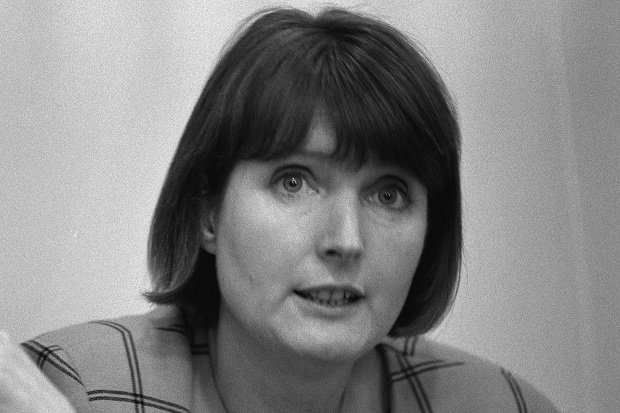At the start of the 21st century, no one felt the need to reach for studies of ‘third-period’ communism to understand British and American politics. By 2016, I would say that they have become essential.
Admittedly, connoisseurs of the communist movement’s crimes have always thought that 1928 was a vintage year. The Soviet Union had decided that the first period after the glorious Russian revolution of 1917 had been succeeded by a second period, when the West fought back. But now, comrades, yes, now in the historic year of 1928, Stalin had ruled that we were entering a ‘third period’ when capitalism would die in its final crisis. As the Wall Street crash was only months away, this was not as fanciful as it seemed.
The strategy for hastening its fall was suicidal, however. No compromise was possible with anyone who stood in history’s path. Reformists were opportunists and traitors. Social democrats were social fascists; as bad as the Nazi gangs which were already gathering on Berlin streets. Or perhaps worse. For at least the fascists were honest in their way. The parliamentarians and the compromisers were sneaks who had been ‘bribed by the bourgeoisie’ to deceive the masses, as no less an authority than Lenin had said.
When Stalin’s enemy, Leon Trotsky, who was hardly a moderate, warned that instructing left-wingers to fight other left-wingers was a sure way of allowing fascism to ‘ride over your skulls and spines like a terrific tank’, Ernst Thälmann, the leader of the German communist party, denounced him for his ‘criminal counter-revolutionary propaganda’.
The Soviet Union admitted ‘third period’ communism had failed in 1934, for reasons anyone who knows who took power in Germany in 1933 can guess.
That seemed to be that. A warning of the dangers of sectarian delusion, no doubt, but one from so long ago it was of historical interest only.
Not so. And not so long ago. Substitute ‘Blairite’ or ‘neo-liberal’ for ‘social fascist’ or ‘criminal counter-revolutionary’ and a large section of 2016’s Anglo-Saxon left is back in 1928. The red Tories and establishment liberals are as bad as or worse than real Tories or Republicans, they say. The City or Wall Street has bribed them. At this moment of economic and political crisis, they are the true villains, who stand in the way of the people’s victory.
I can see how they got that way, as I have been that way myself. I could write you a book on what is wrong with Hillary Clinton, and did in fact write several books on what was wrong with Tony Blair. What I said was true, I hope. But I cannot deny that it left the worst of my readers with an unwarranted feeling of superiority. They could say that they had seen through the spin. Unlike the manipulated sheeple the establishment herded into polling booths, they were sophisticated enough to know there was no difference between the major parties.
Let us accept that, if you want to shift the consensus, you have to change your own side first. Let us also accept that on most issues, differences between the major parties can be small. In normal times, left- or right-wingers hoping for change can live with their opponents in power for a term or two while they concentrate on moving their party. Live with it, that is, until the times veer away from them, and leave their supposed sophistication in shreds. Like the communists of 1928, they then look at best like history’s fools and at worst like their purported enemy’s accomplices.
I say purported because at the Democratic Convention this week it was not clear that Donald Trump was the left’s enemy. Bernie Sanders told his supporters they had to vote for Hillary Clinton for the compelling reason that his name would not be on the ballot paper. Sanders had every right to complain about his party’s establishment stitching him up, but the truth remained: if his followers did not vote Clinton, they would let in Donald Trump. ‘A bully, a demagogue, a danger to the future of our country’ had to be defeated. ‘This is the real world that we live in.’
Unfortunately, his real world was not the world his supporters lived in. They had believed Sanders when he said Clinton was a Wall Street puppet and were not going to stop believing him just because the danger of a mentally unstable and instinctively authoritarian President Trump entering the White House had forced Sanders to sober up. Clinton’s name produced boos. Trump’s brought shrugs. For them, there remained no difference between the two, and it did not matter who won.
The parallels with Britain are so obvious I feel I am insulting your intelligence by raising them. Just in case your eyes have wandered from the fanatical frenzy that is tearing the Labour party apart, may I point you to the launch of Jeremy Corbyn’s campaign for the Labour leadership in Salford. Corbyn is the Labour movement’s Pontius Pilate. His supporters may engage in sexist, homophobic and racist attacks on Labour MPs. He washes his hands before the multitude and says that he is innocent.
His underlings are not so restrained. Richard Burgon, a podgy solicitor turned Labour MP and tribune of the proletariat, provided the warm-up act, which you can see on YouTube at tinyurl.com/burgon. With the clunking language a 20th-century communist would have recognised, he listed the forces that ‘impede the positive progress of history’. They were the Guardian newspaper and the Labour MPs who would ‘betray’ Corbyn’s supporters and drive them from the party. Burgon barely seemed to have noticed that Britain has had a centre-right government since 2010. It did not occur to him that the disintegration of the Labour party was opening up vistas for the right that stretch into the 2020s.
I cannot imagine Corbyn imitating Bernie Sanders and finding the integrity to argue with his cultish fans. If the courts say he cannot stand as Labour leader, he will not tell them to rally round his successor. If Labour becomes a rump party under his leadership, he will never accept the need to change.
Late in the day, Sanders realised that stopping Trump from becoming the most powerful man on earth mattered after all. His supporters in the convention hall disagreed. Like Corbyn and his activists in Britain, and the Stalinists of 1928, they believed their real enemies were on their side.
Sometimes you can get away with thinking like that. Sometimes not. Ernest Thälmann went along with Stalin’s categorisation of social democrats as ‘social fascists’ until actual fascists came to power in Germany. They taught him the difference by holding him in solitary confinement for 11 years, and putting him before a firing squad in 1944.







Comments